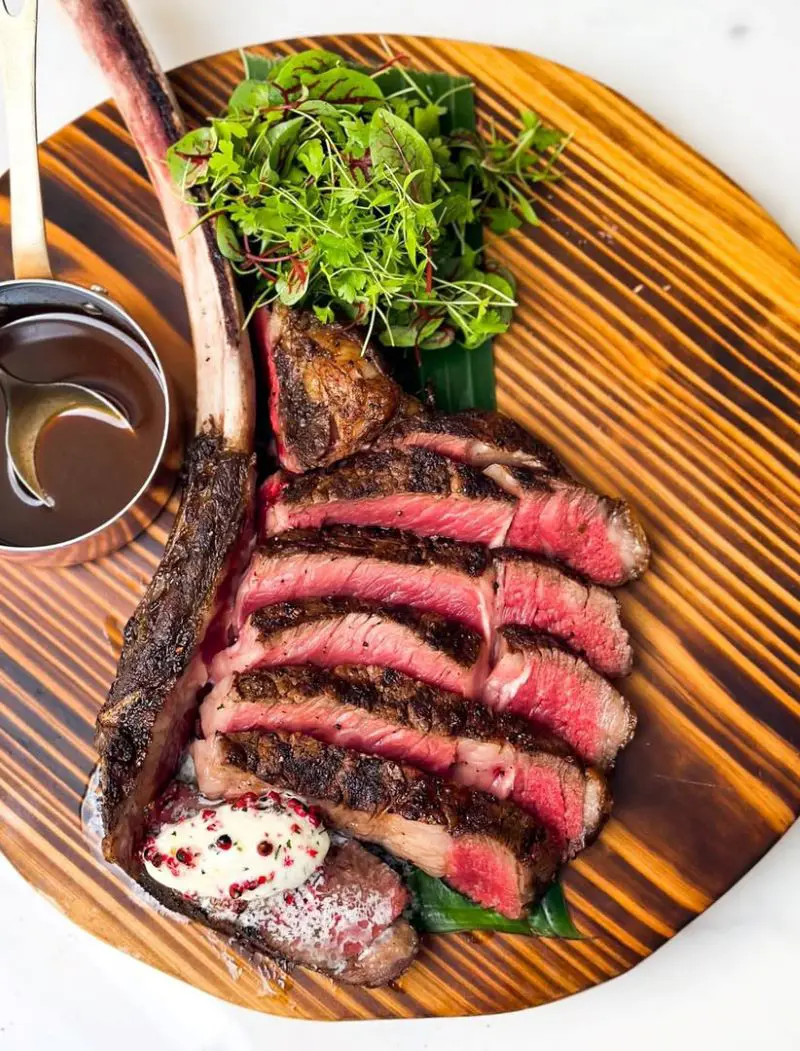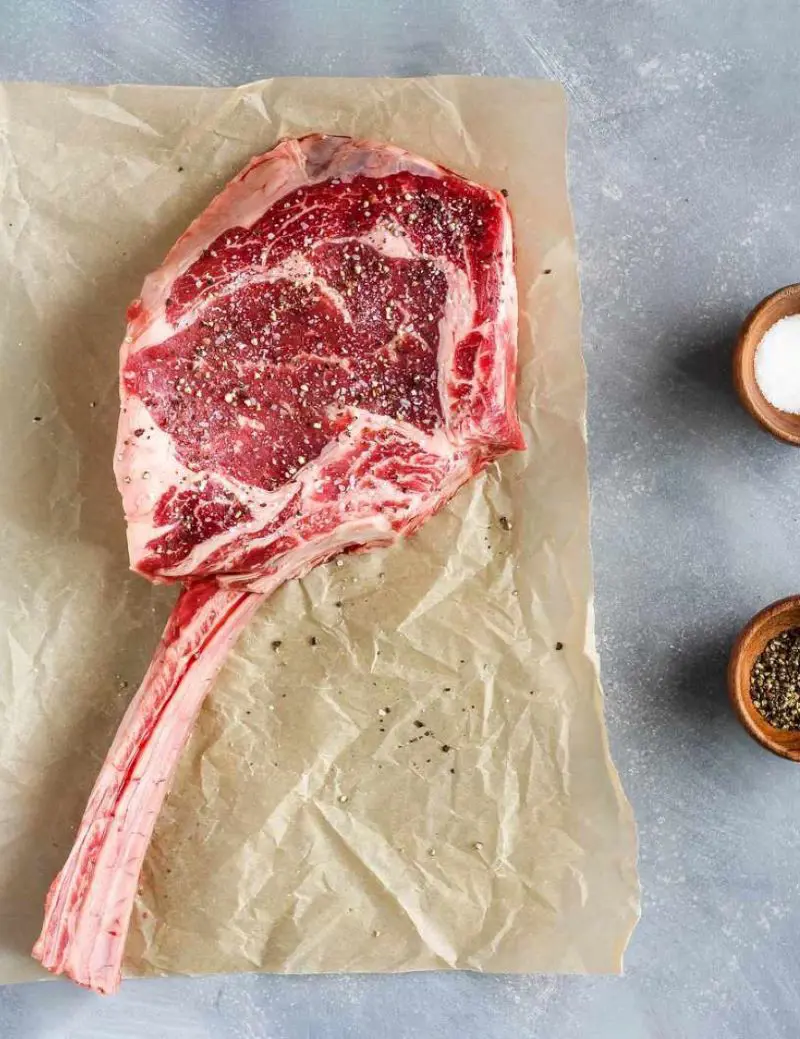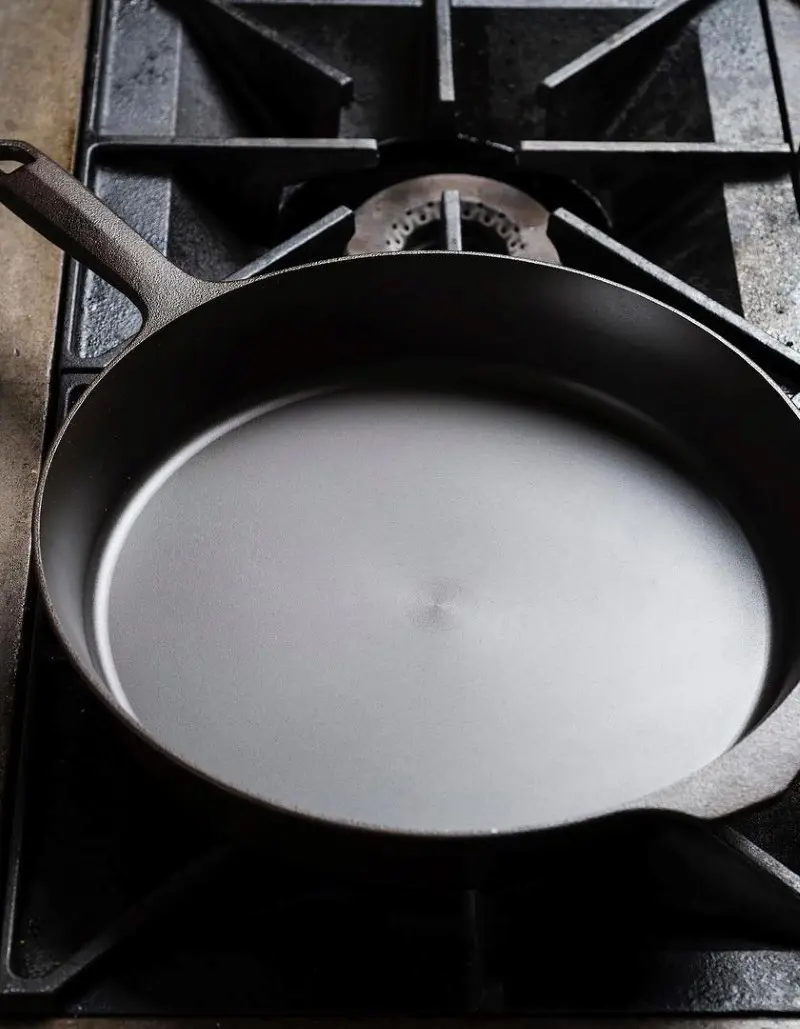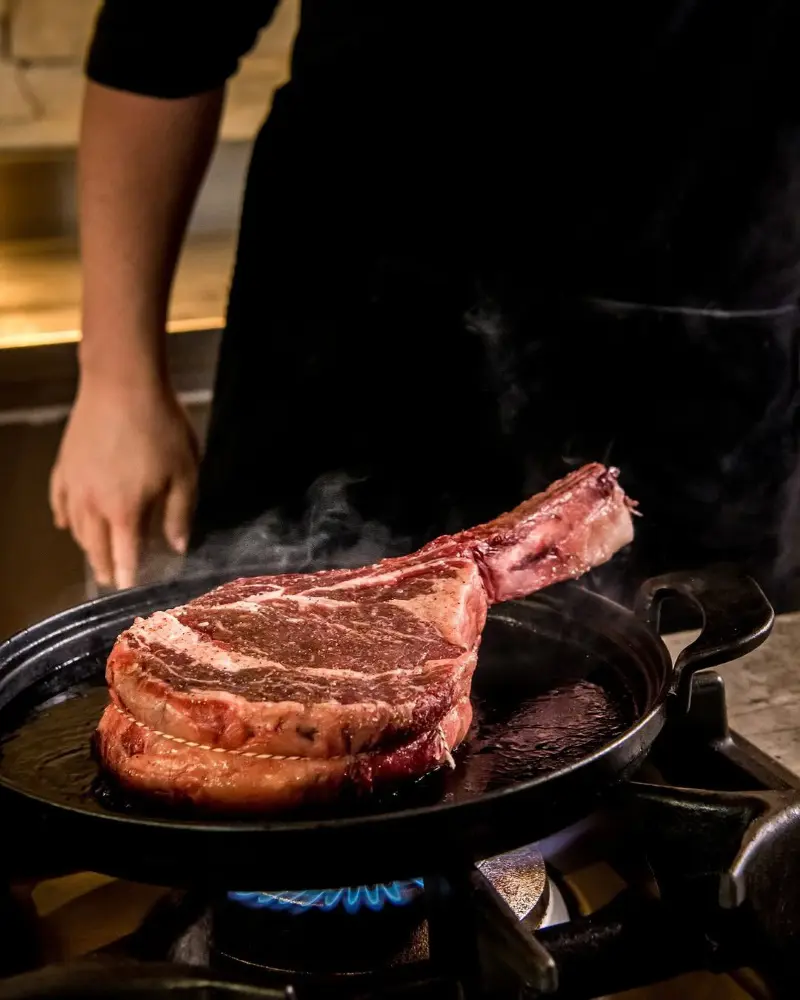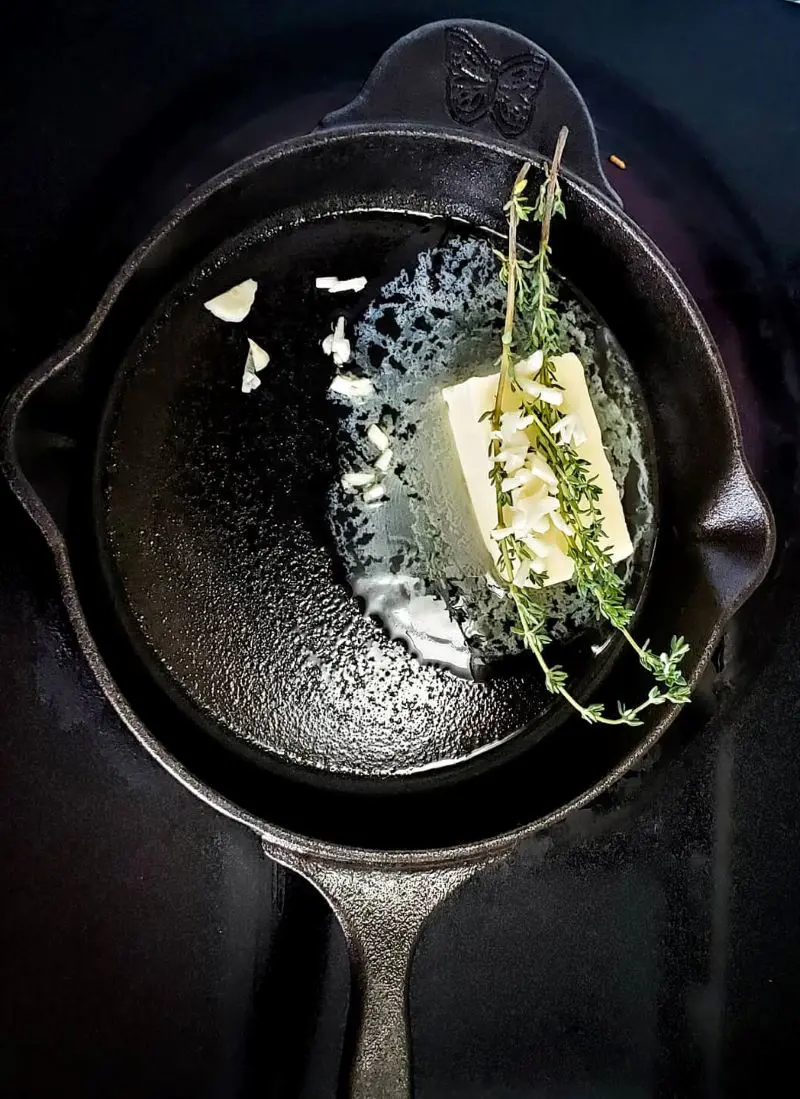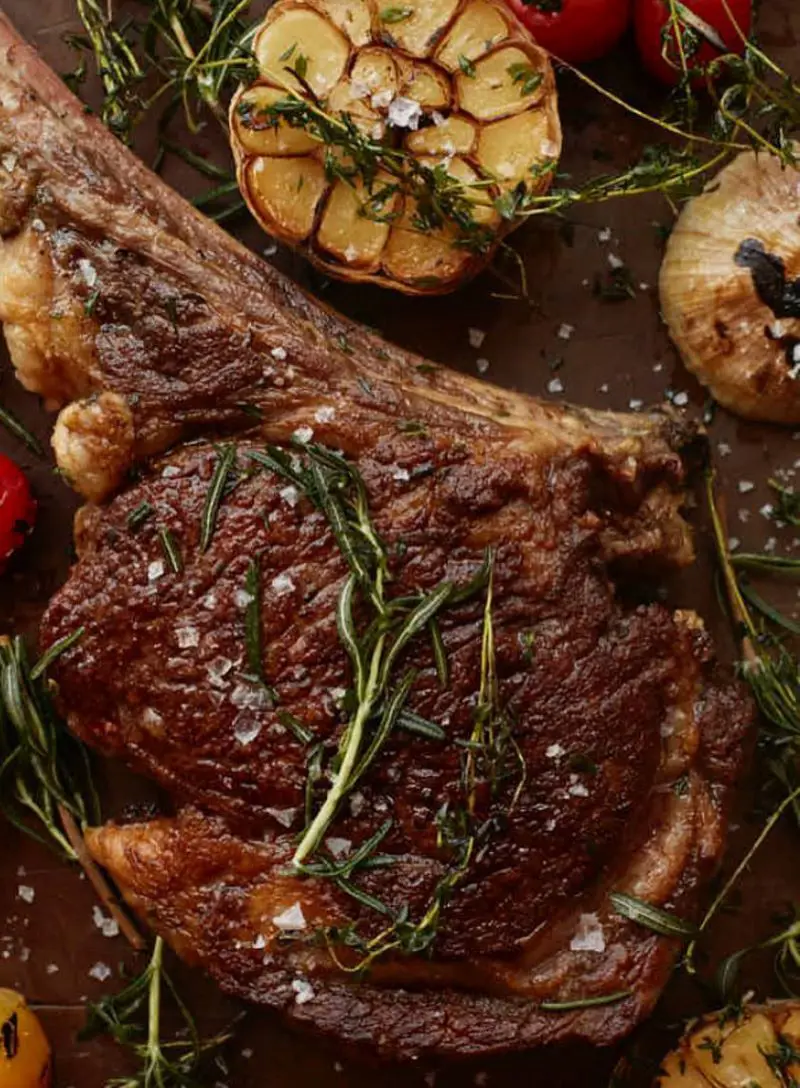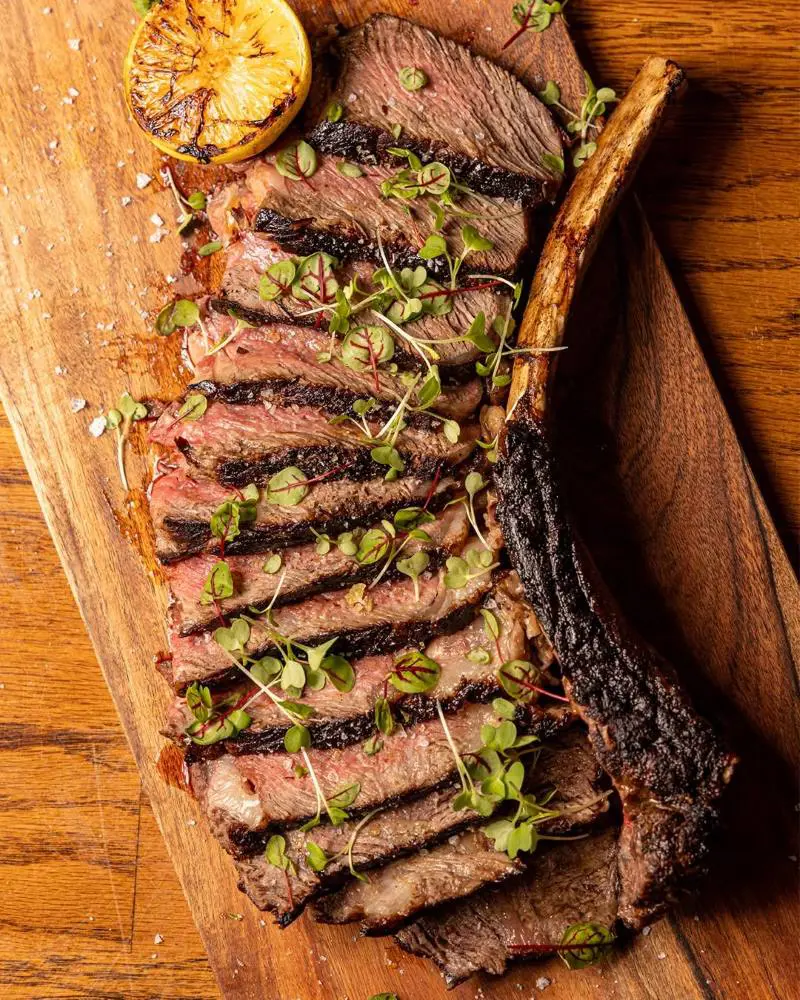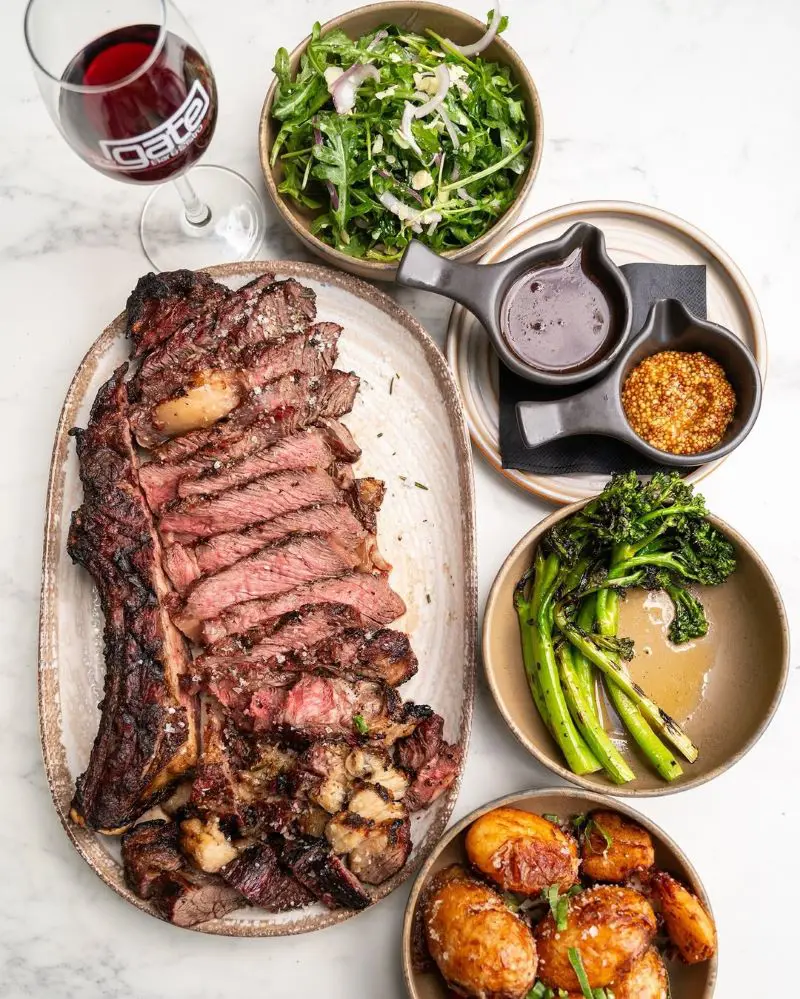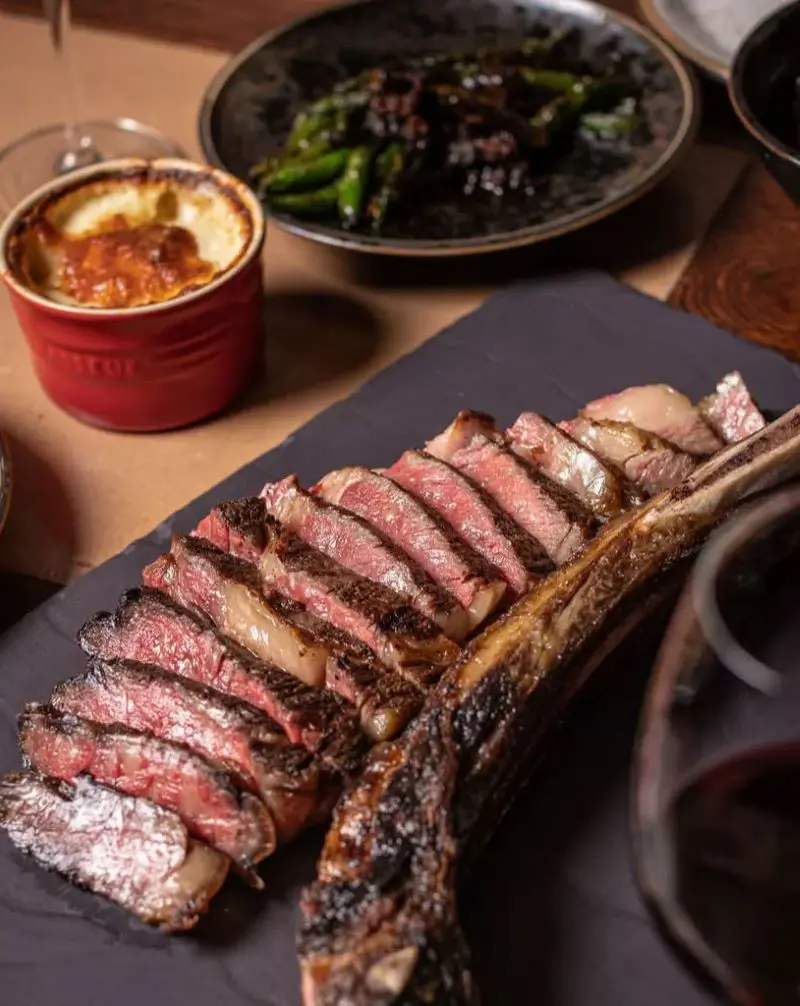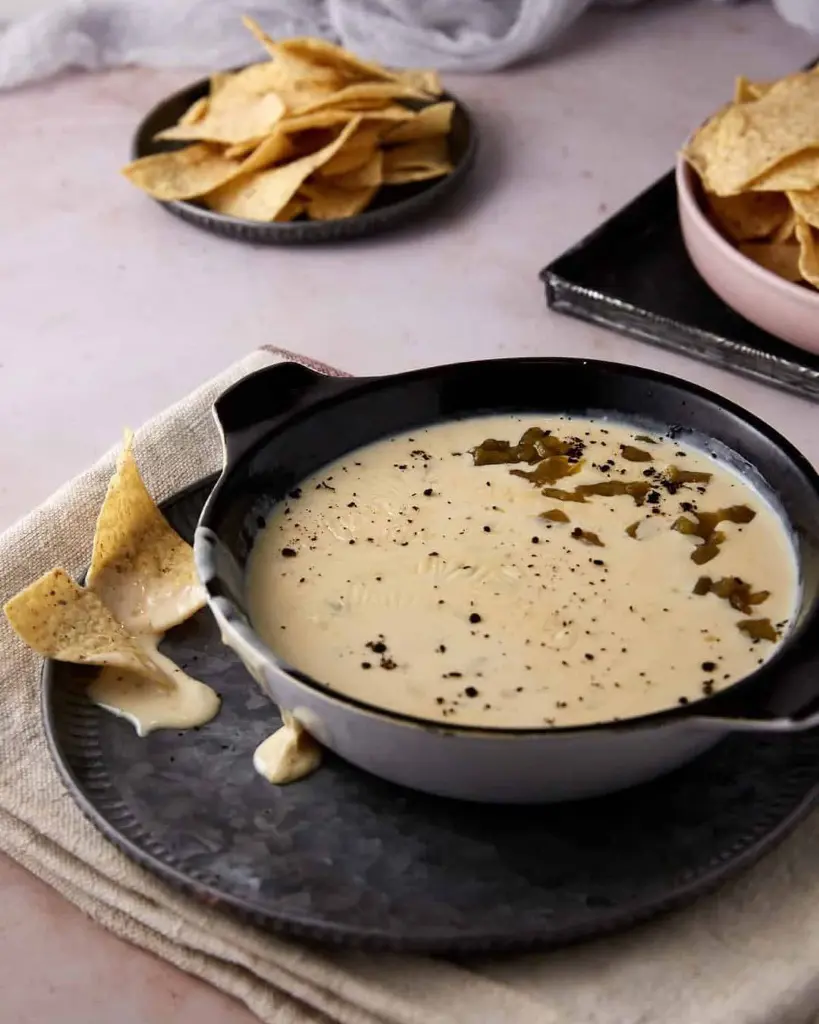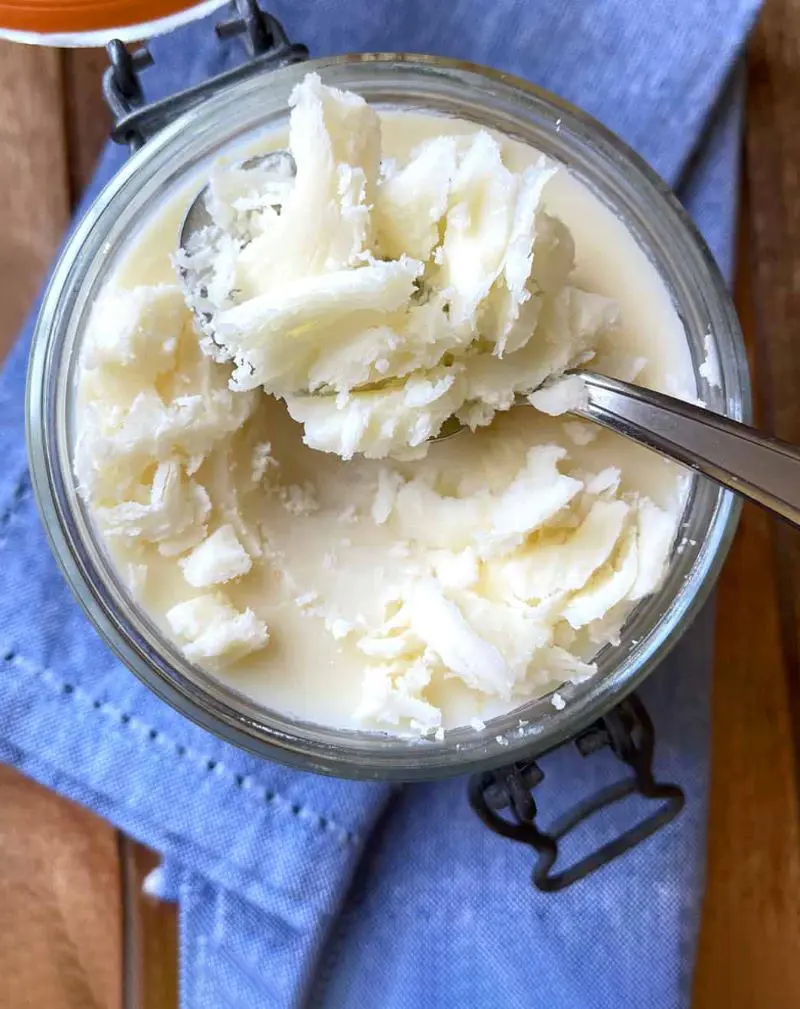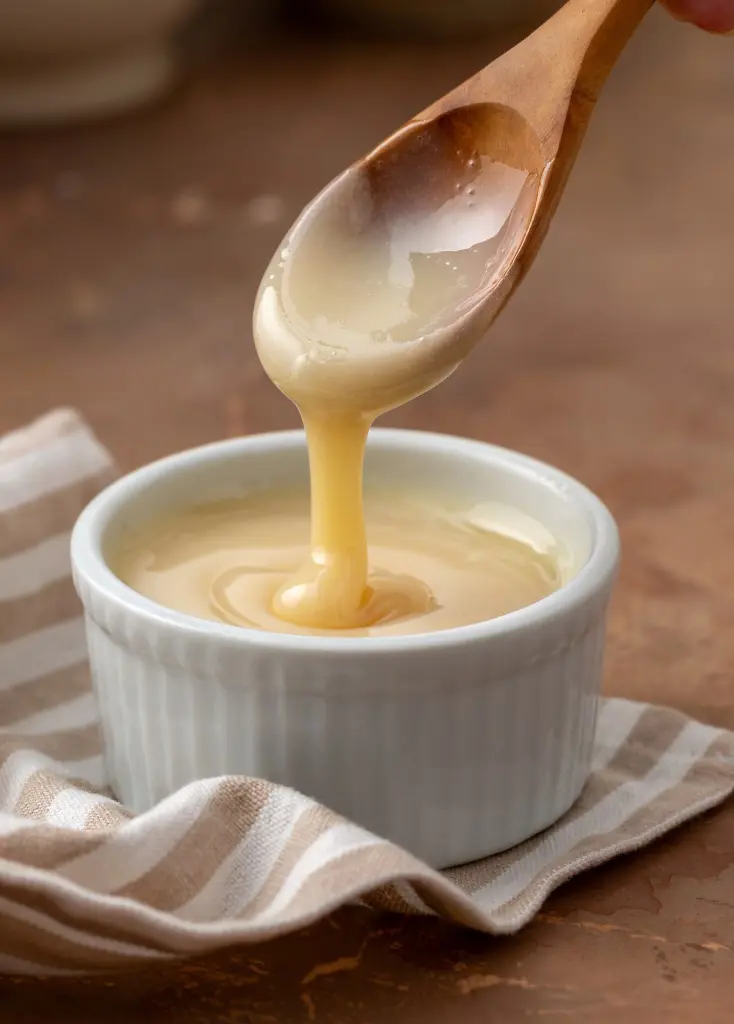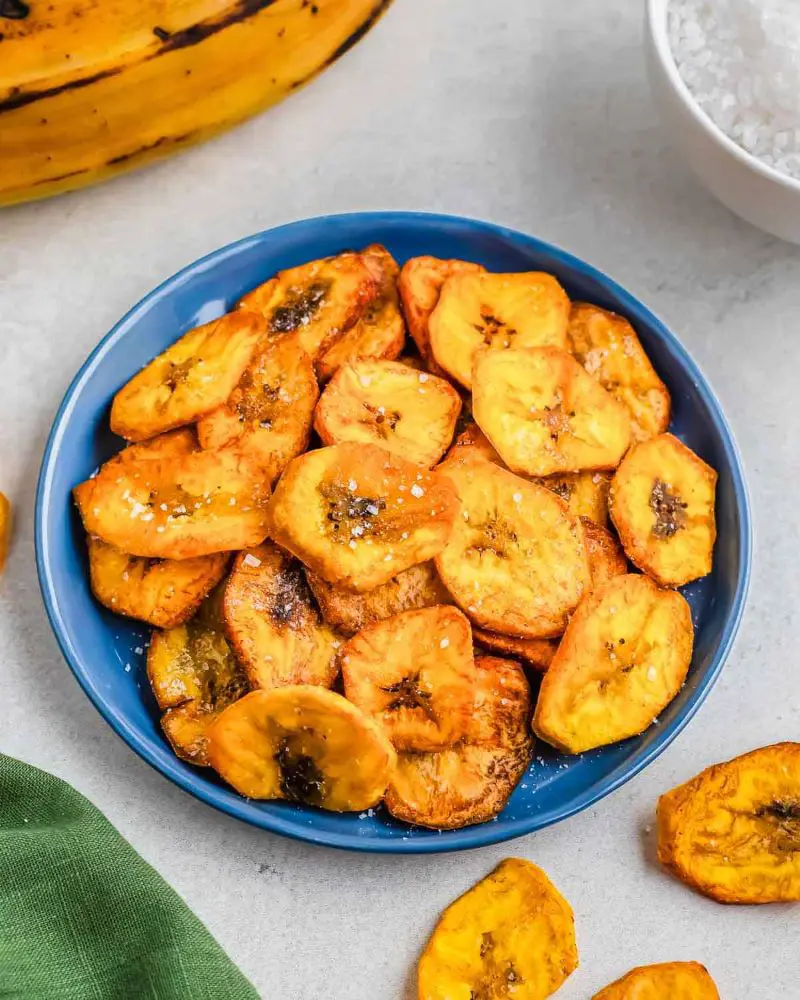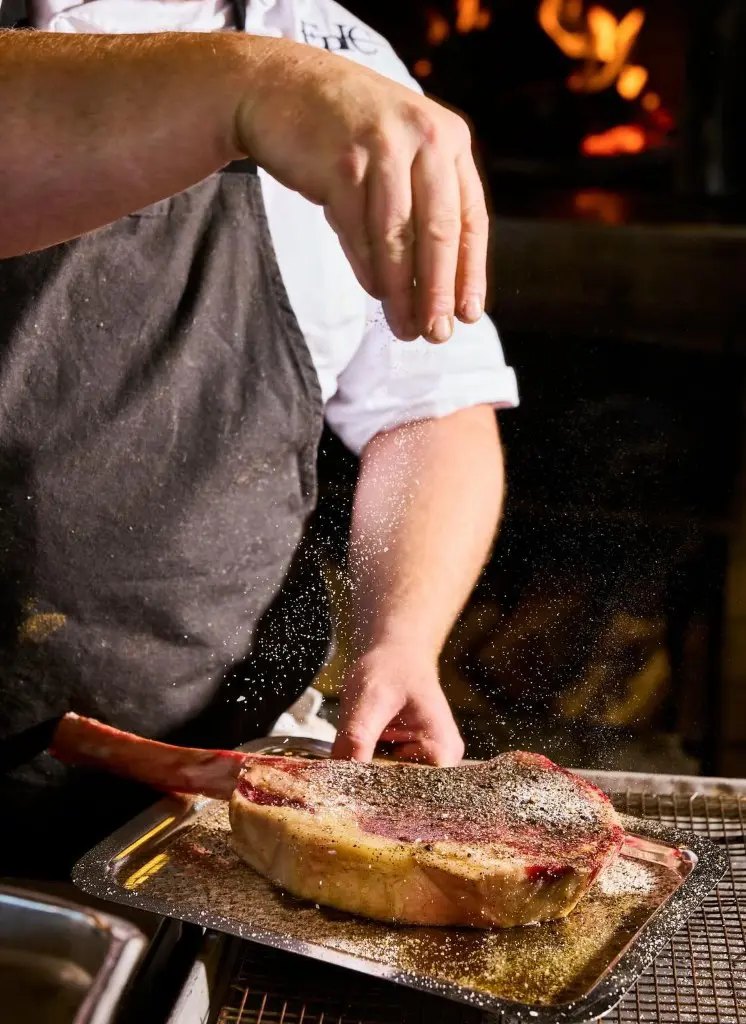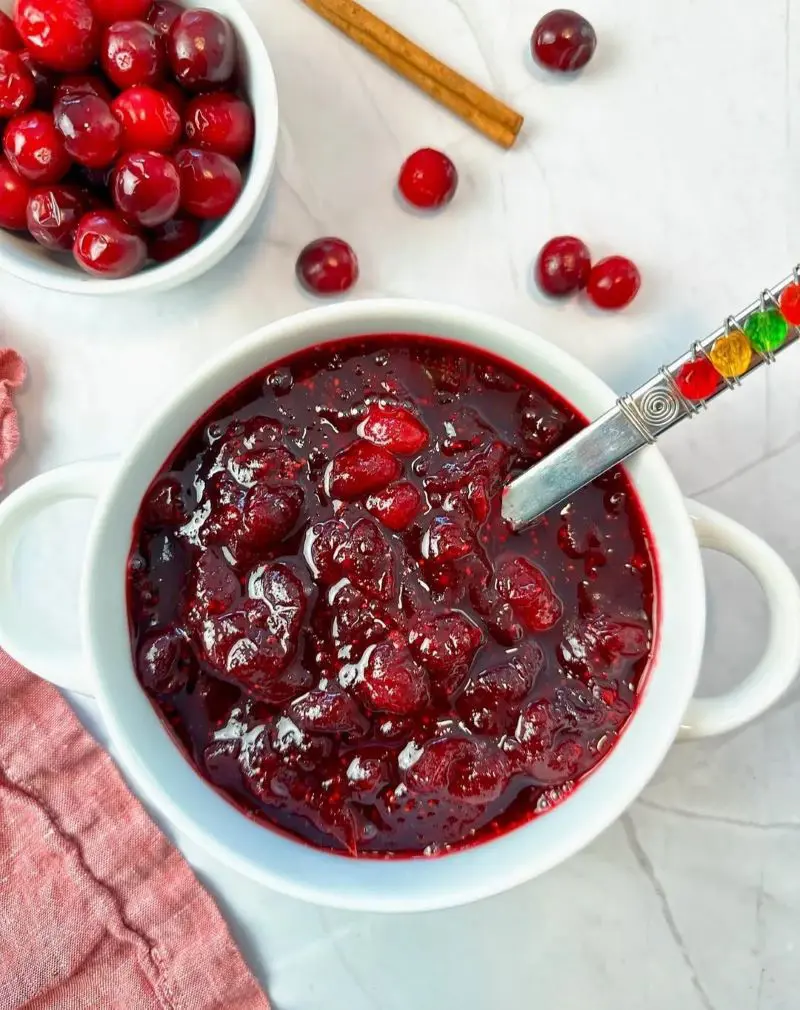What You Need
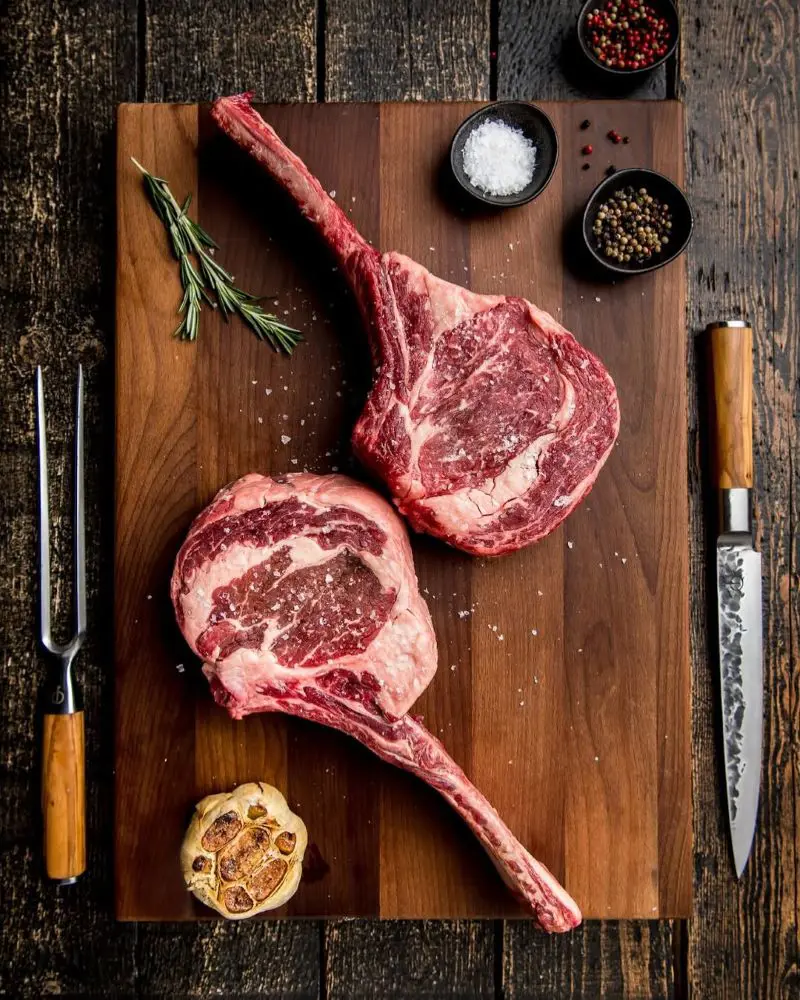
The beauty of an exceptional steak lies in simplicity. Skip the fancy ingredients and complicated techniques - a Tomahawk needs just a handful of quality basics to shine. Most home cooks already have these staples in their kitchen.
When combined thoughtfully, these simple elements let the meat's natural flavors take center stage.
- Tomahawk rib-eye steak: When browsing different cuts of steak, the Tomahawk stands out with its show stopping bone handle. The meat should have a vibrant red color with even bright white fat marbling. At nearly two inches thick, one steak easily feeds 2-3 hungry people.
- Garlic: Roasted garlic brings mellow sweetness that perfectly balances the meat. As it roasts, garlic transforms from sharp and spicy to soft and buttery. These tender cloves melt into the butter baste, infusing every bite with savory notes that enhance rather than overpower the beef.
- Oil: Heat is crucial when searing steak, so reach for oils that can take the heat without smoking up your kitchen. Canola, peanut, or grapeseed oil create that steakhouse-worthy crust while letting the meat's natural flavors shine through.
- Butter: Always grab unsalted butter for steaks. Not only does it let you control the seasoning better, but it also brings a rich flavor that enhances the meat's natural savoriness. As it melts and browns in the pan, butter develops nutty notes that take your steak from good to magnificent.
- Salt: Beyond basic seasoning, salt helps create that gorgeous crust while drawing out and concentrating the meat's natural flavors. Think of salt as your flavor enhancer - without enough, even the best steak falls flat.
- Pepper: Fresh cracked pepper beats pre-ground every time. Those coarse bits create tiny flavor bursts across the steak's surface, adding warmth and subtle heat that complements the beef perfectly.
- Fresh Thyme: This tiny-leaved herb packs concentrated flavor that can stand up to robust beef. While rosemary or sage work fine, thyme brings subtle earthiness that enhances without overpowering. As the sprigs cook in the butter, they release aromatic oils that perfume the entire dish.
